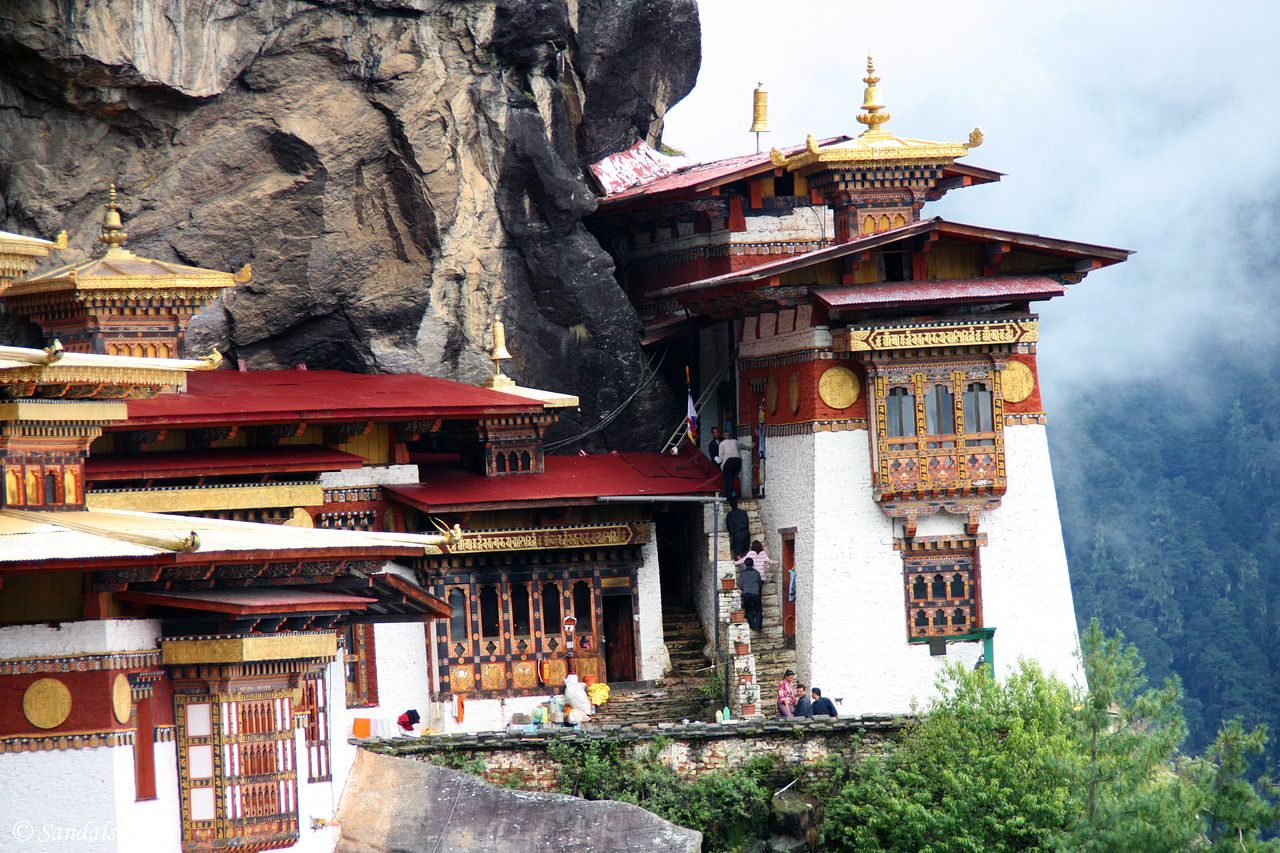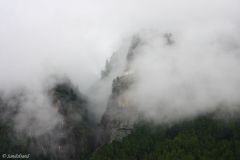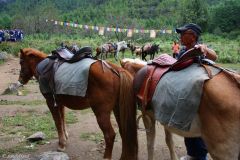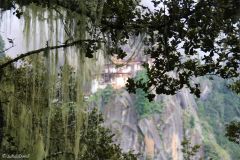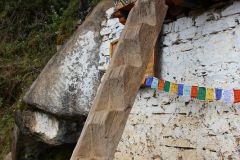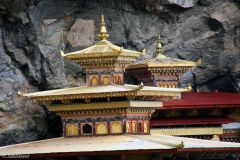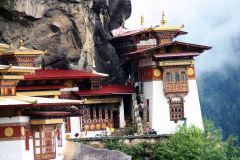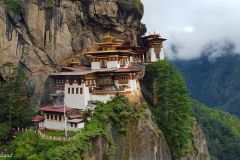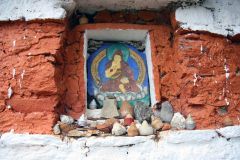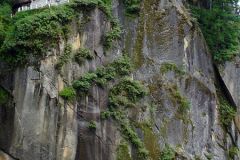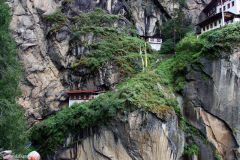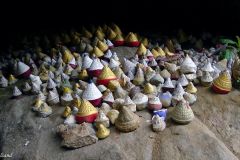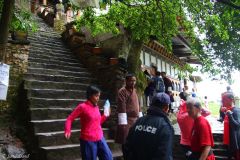Welcome to Bhutan’s most iconic landmark and religious site, the Taktsang Lhakhang (Tiger’s Nest). The small monastery clings to a sheer cliff face hundreds of metres above the valley below. It is a spectacular place to visit.
A short history lesson
There are two slightly alternative stories of how the tiger, or rather tigress, came to rest here high up on the steep mountainside in western Bhutan. They are both related to the great Tibetan Guru Rinpoche in the 7th century. Either he rode the back of a tigress and spent time here taming the Tiger demon. Or he rode the tigress who was in reality a transformed mistress.
Anyway, the Guru spent 3 years, 3 months, 3 days and 3 hours in one of the caves, meditating. Rinpoche emerged from his cave after he had tamed the demons and went on to become the Precious Master and also the Second Buddha. From here he walked into the land of the Bhutanese and converted them to Buddhism, the tantric type.
A thousand years later, in the late 17th century, followers constructed a monastery on this sacred place. It has remained a world marvel ever since, open to the very few. For the Bhutanese it is a pilgrimage destination and a national icon.
In other countries it is pictured in every tourist brochure, and is definitely the most famous place in Bhutan. Until recently Bhutan was in reality a sealed off country admitting very few visitors. This is now changing rapidly, and almost all visitors hike up the trail to get inside the monastery and temples of the Taktsang Lhakhang, the Tiger’s Nest.
Getting up – a steep hike
Expect to be driven from your hotel or guesthouse in Paro to a large parking lot in a forest of tall pine trees. From here there is a 3 hrs hike uphill, and perhaps half that on the way down depending on lunch or not.
There are horses for hire to take you halfway to a restaurant, but from there you will have to walk the rest on your own. Most people hike all the way. There is a dirt trail most of the way, and it can get slippery in the wet season. The restaurant is a good place for a break, in either direction, and serves an alright buffet meal.
Be sure to bring along enough water and to take your time. This is after all a pilgrimage, of sorts, and the monastery is located at an altitude of 3120 metres. This is the reason why most foreigners are taken here at the end of their stay in Bhutan. They will have become acclimatised to the altitude. Do not underestimate this. This is a strenuous hike and you need to be in good condition and wear sturdy footwear.
Do not worry, you will have the opportunity to catch a glimpse of the monastery even from the parking lot, weather permitting, and from several lookout places on the way. The restaurant is in particular a good place for that rewarding view of the vertical cliff and the monastery clinging on to it.
Finally, the iconic view
The next, and the most famous stop is at the end of the dirt trail. This is the place where all iconic pictures are taken from. After this prepare for a long walk down a gorge on stone steps laid out or carved out from the cliff face. When you reach the bottom at a waterfall, you will have to climb up to the monastery’s only entrance. Prepare for 700 steps in all. People have been known to fall off the cliff to a certain death.
Looking in
Looking at the monastery from the outside, and walking the steps and halls of the temples inside, one would not suspect that the monastery burned down completely in 1998. It was quickly rebuilt and we are all happy about that.
When we arrive at the gate, we are obliged to hand in all photographic equipment. Unfortunately, we are not allowed to take pictures inside.
There are eight caves at the monastery, and you are not admitted to all. The resident monks are, during their 3 years tenure here. Prepare to be led by your personal guide through the temples, be invited to plant incense sticks, pray, and enjoy the fabulous view of the cliff, the approaching and leaving visitors, and the fertile Paro valley.
My best advice is to spend time inside the temples. It is quite compact actually and you will most likely not be spending more than an hour or two inside.
What more?
At the time of my visit, in 2015, there was a constant stream of people going up or down the trail – on horseback or on foot. Most of them were Bhutanese, reflecting the fact that this is sacred religious place to the very devout Buddhists populating the country. There were also a great deal of foreigners, a number that I suspect will multiply by x numbers in the coming years. Bhutan is about to open up to international mass tourism, and, as always, I’m glad I got here before the crowds.
The map below shows the places I visited and the roads I travelled during my week in Bhutan. You may expand the map into another tab or window, or zoom in and out here and now.
This series from Bhutan consists of the following chapters:
(1) Thimphu and surroundings (days 1-3)
(2) The Dochula Pass and Punakha Valley (days 3-4)
(3) The Phobjikha Valley (days 4-5)
(4) The holy Taktsang Lhakhang (Tiger’s Nest) (day 6)
(5) The city of Paro (days 5-7)
PICS – Bhutan (all images from the country in one place)
This article was the fourth from my visit to Bhutan. I flew in from Bangkok, spent seven days in Bhutan and then took a flight to Nepal for another week. Read the introduction to the series in this article: The outline of a visit to the Himalayas.
